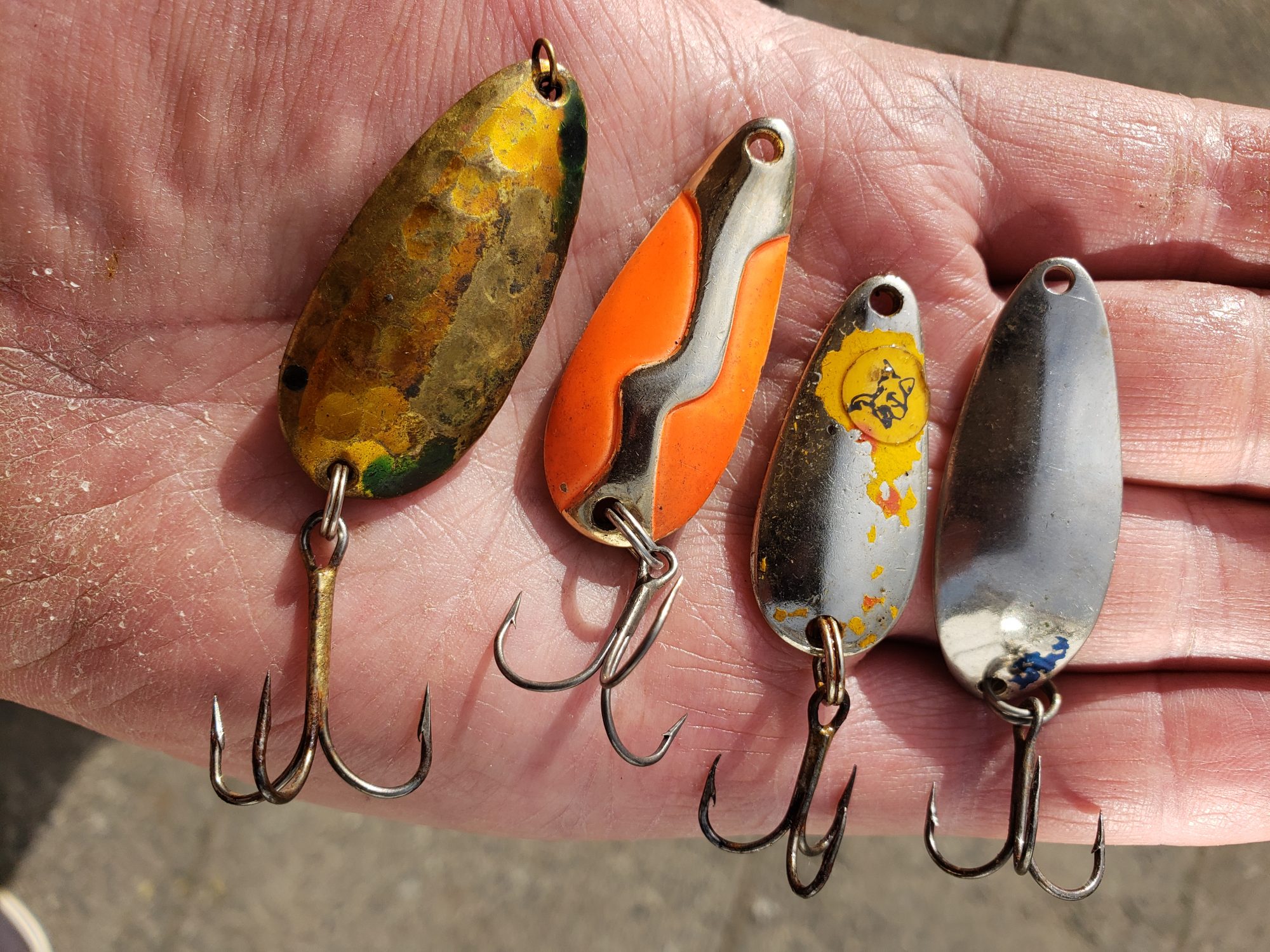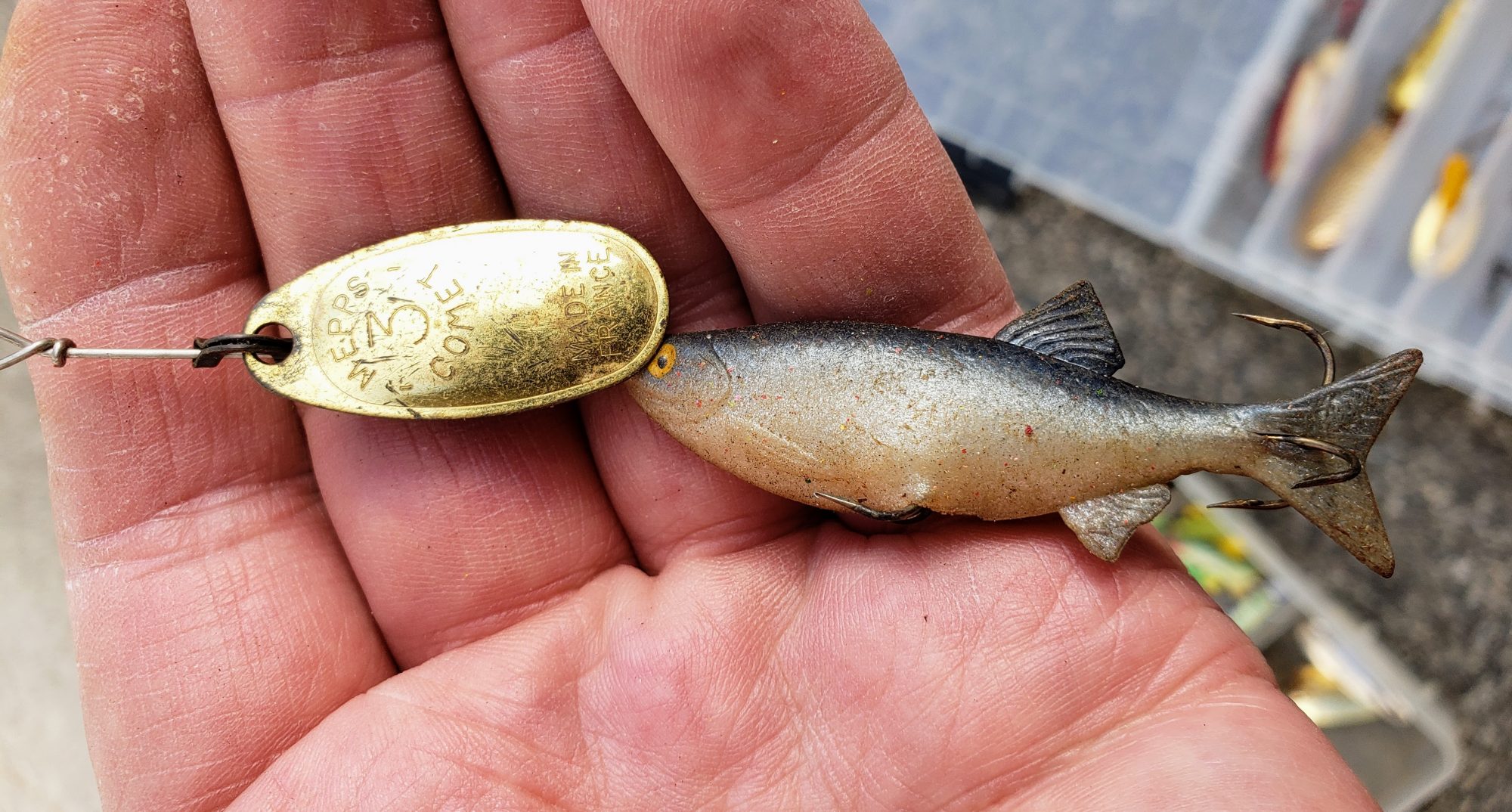
Top Five Lure Presentations for Brook Trout
Back to Superior Country BlogBrook trout are the prettiest of all freshwater sport fish. They are also a fish that anglers travel from all over the world to catch. Nowhere in the world can you catch bigger brook trout – in both lakes and rivers – than in Superior Country. The world record brook trout was caught on the Nipigon River in 1915 and that record still stands. If it is ever to be broken, it will likely be in Superior Country. Here are my top five lure presentations for brook trout.
Casting Spoons

This is a bread-and-butter technique for many trout anglers, and it is certainly one I recommend to spin-fishing clients when guiding. The reason is simple: spoons are simple to fish and very effective in a wide variety of situations. Spoons also attract fish better than just about any other type of lure. You may not always hook the trout, but it will likely show itself. Spoons are relatively cheap compared to some of the other options an angler has so losing one is not totally traumatic.

Megan Cobb with a large brook trout caught on a Nipigon Spoon – G Ellis photo
A few of my favourite brook trout spoons include the Williams Nipigon Spoon, Acme Little Cleo, Luhr Jensen Krocodile and EGB Blinker. Use heavier weight spoons of 3/8th or 5/8th ounce on the big waters of Lake Superior and Lake Nipigon but lighten it up on inland waters and rivers. It is hard to beat a silver spoon on the big lakes, as a smelt are a key forage. A dash of orange, green or blue adds some colour. On inland lakes, brass, bronze and darker spoon colours work well as trout eat more insects, amphibians and stickleback. If the factory hooks don’t feel sharp, replace them with VMC or Gamakatsu trebles. Razor sharp hooks make a big difference.
Bucktail Jigfly

Jigfly caught brook trout held by Gord Ellis
The bucktail jigfly has been a key lure presentation for as long as I’ve been fishing the Nipigon/Superior system (40 years or so).The jigfly presentation is both a nod to the effectiveness of steamer flies and a simple way to fish a fly pattern on spinning gear. Various people have made home-made bucktail jigflies and sold them over the years. Many other anglers have just tied their own. For many years I tied a style of jigfly that included a hackle around the base of the head. My buddy Joe Kostecki started tying and marketing jigflies two decades ago and his company Mighty Mitch and Jungle Joes jigflies make a great product. If you see a jigfly with a hackle around the head, that is a GE Special. Jigflies work well in both lakes and rivers, but I think they really shine where the current is strong.

Some of the author’s go to brook trout lures – G Ellis photo
I recommend fishing a jigfly with a rod of eight to nine feet in length, a good quality spinning reel and 20-pound braid main line. Run an 18-inch fluorocarbon or monofilament leader and use a high quality metal clasp to attach the jigfly. In current, cast the jigfly out and let it get carried with the current as you slowly reel it in. You the jigfly to look like a minnow or nymph that is disoriented in current. Strikes will generally be sharp, but if you feel like a trout is nipping at the jigfly, just keep the retrieve going. Sometimes trout will follow right to the boat or shore. In the early season, lighter coloured jigflies that look like minnows or smelt are often best. As the season wears on, and the brook trout start to get ready to spawn, much brighter – or much darker – jigflies get the nod.
Casting Crankbaits

A few Rapala Countdown Elite crankbaits – G Ellis photo
The beauty of a crankbait is it mimics very well what most big brook trout like to eat. The trophy fish are mostly piscivorous, which is a fancy name for fish eaters. Smelt, shiners, stickleback, sculpins and minnows are all high on the menu for paddle length brookies. So using a crankbait that looks similar to one of those bait fish is a great trigger. My go to crankbait for many decades has been the Rapala Countdown CD9. It is a simple, subtle crankbait and sinks, which make sit easier to get down in fast water. The new Rapala Countdown Elite series have taken the realism to the next level and sink just a little faster than the original.

This big brook trout hit a Lucky Craft Pointer crankbait – G Ellis photo
RELATED ARTICLE: 10 Brook Trout Facts
The Lucky Craft Pointer is another great choice, as is the Berkley Hit Stick. Retrieve a crankbait with downward strokes of the rod tip, to give the lure a stop and go action. A lot of the strikes will be on the pause. Silver and black, pearl and smelt/shiner are all great finishes and, if nothing else is working, a fire tiger coloured crankbait can trigger a strike.
Casting and Trolling Spinners

Brookie that hit a spinner – G Ellis photo
Spinners are one of the lure presentations traditionally associated with trout fishing. There is no doubt the twirling blade of a spinner is an effective way to attract brookies. I’d bet that many of you reading this article caught your very first brook trout on a spinner. The classic casting spinners include the Mepps Aglia, Panther Martin and Blue Fox Vibrax. There are a wide variety of other spinners that also do the job. Casting spinners requires a steady retrieve to keep the blade turning consistently. Some anglers like a “dressed” treble of squirrel tail while other like a bare treble, with or without some dew worm on it. A few spinners, like the Mepps Mino, add a plastic minnow to the equation. All of these spinner presentations have caught brookies.

Mepps Comet spinner with plastic Mino – G Ellis photo
When you are trolling, there are a few spinners that have been time tested. Some like the Hildebrandt spinner, have multiple blades and are usually tipped with a worm. I’ve had good luck trolling the Mepps Comet spinner (white with red dots) with either a plastic minnow or fly trailer.
Silver bladed spinners are a good choice on sunny days, while gold or bronze do the trick on cloudy days. The spinner blade with black and yellow dots is a classic and is especially deadly on inland lake. Make sure when you are casting or trolling spinners that you have a ball bearing swivel somewhere on your line. If you don’t, the line twist will be awful.
Plastic Jigs and Swimbaits

Berkley Power Minnow and Smeltinator jighead – G Ellis photo
Another jig presentation that has proven to be effective is a soft plastic minnow, tube, twister or swimbait. The modern plastics have the added benefit of being able to hold scent. The Berkley four-inch Power Minnow is one of my favourites and has an undeniably powerful fish attraction. The Breck’s Exude rubber twisters have proven to be deadly as have those made by Kalin. Any long-shanked jig can used for plastic, but the Smeltinator head, made by Lake of the Woods tackle, is my top choice. The Smeltinator’s use top quality hooks and have a great head shape. Paddletail swimbaits can also be killers, especially ones that are white, pearl or silver. Fish plastic jigs in the same way and with the same terminal tackle as the jigfly. Plastics are especially effective in the early and late season when the water is cold.

Gord Ellis Sr with a giant Nipigon brook trout – G Ellis photo
Brook trout are a challenging and fun species to catch. Any one of the lure techniques outlined here can deliver for you, but don’t be afraid to mix it up. Brookies are full of surprises.

 Walleye
Walleye Northern Pike
Northern Pike Lake Trout
Lake Trout Brook Trout
Brook Trout Steelhead
Steelhead Salmon
Salmon Smallmouth Bass
Smallmouth Bass Perch
Perch Superior Picnics
Superior Picnics
